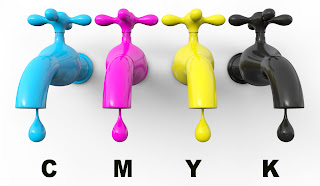Not long ago you would buy a roll of film at your local drug store, load it into your 35mm camera, and shoot sparingly. Return the exposed roll to the same drug store, and wait for prints.
The photo finishing industry has changed dramatically just in the last decade. Today, we can snap a photo and view images instantly.
Easy doesn’t always mean better. Film was film, you got what you got. But in this new digital era there are so many different options that can really impact the overall quality of your images.
RGB or CMYK? 8 bit or 16 bit, or more? JPG or TIFF? RGB, sRGB, Adobe 1998 RGB, or ProPhoto? DPI or PPI?... and if so, 72, 150 or 300? CS5 or Elements? ISO, megapixels, aperture, shutter speed, Nikon vs. Canon?..... you get the point, right?
RGB or CMYK? 8 bit or 16 bit, or more? JPG or TIFF? RGB, sRGB, Adobe 1998 RGB, or ProPhoto? DPI or PPI?... and if so, 72, 150 or 300? CS5 or Elements? ISO, megapixels, aperture, shutter speed, Nikon vs. Canon?..... you get the point, right?
Do the images stay on the memory card?
Do you save them to your hard drive only to be viewed as a screensaver?
What happens when your hard drive crashes? With advancing technology, will memory cards become obsolete?
Solution: Print.
- Printing at home with an inkjet printer. Is it archival? When was the last time you printed a good number of prints on that printer? Special archival based paper is so expensive... and then there's the ink. Inkjet printing is not archival unless you are using specific products. Is it waterproof? Will it last hundreds of years?
- Photographic Printing. Unlike an inkjet print where the ink sits susceptible, on the surface of the paper, traditional photographic printing is exposed by light, processed in photo chemicals just like in an old fashioned dark room.Photographic printing is the most archival as the image is embedded into the paper. This process is not limited to ink colors.
Premium Printing: Persnickety Prints.
Photographic Printing (see #2 above).
Prejudging/Optimizing. We look at every single image to determine if it needs to be lightened, darkened, color enhanced or slight contrast added. Other "labs" typically run the images in auto mode.
Silver halide photo paper (not the photo paper in the electronics department at your local Wal-mart) is advanced from a light-tight container, trimmed to the size requested, and proceeds past the laser exposure unit where paper is exposed with a latent image. The laser light source literally engraves the image into the emulsion on the paper.

The photographic developer is a chemical that makes the latent image on the print visible. It does this by reducing the silver halides that have been exposed to light to elemental silver in the gelatin matrix. The bleach fix stops that development process. The bleach fix stabilizes the image, removing the unexposed silver halide remaining on the photo emulsion, leaving behind the reduced metallic silver that forms the image, making it insensitive to further action by light.
After taking a bath in four separate wash tanks and drying off in a quick dry cycle, we have a perfectly printed Persnickety Print. This entire process takes about 3-4 minutes for one print.
Enlargements
Enlargements from 16x20's up to 30x40 are handled in our dark room (yes, it's completely dark). We have a similar machine to the Noritsu, but on a much larger scale. It's what we call our hidden little secret. This machine works much like the Noritsu, except it has a light-emitting diode that exposes the paper and the prints must be processed by hand.
It’s all about Chemistry. To achieve a “persnickety” print, the emulsion in the paper must be tested and balanced to it's corresponding light source. That same light source must be maintained and calibrated. Even the photo chemicals need to be checked and balanced. With too much or too little paraphenylene diamine in the developer, the prints will never come out with the appropriate color. It is a science.
It is what we do at Persnickety Prints.
We are P e r s n i c k e t y.
-Devin Peirce





great informative information Devin. I love seeing what happens behind the scenes!
ReplyDelete